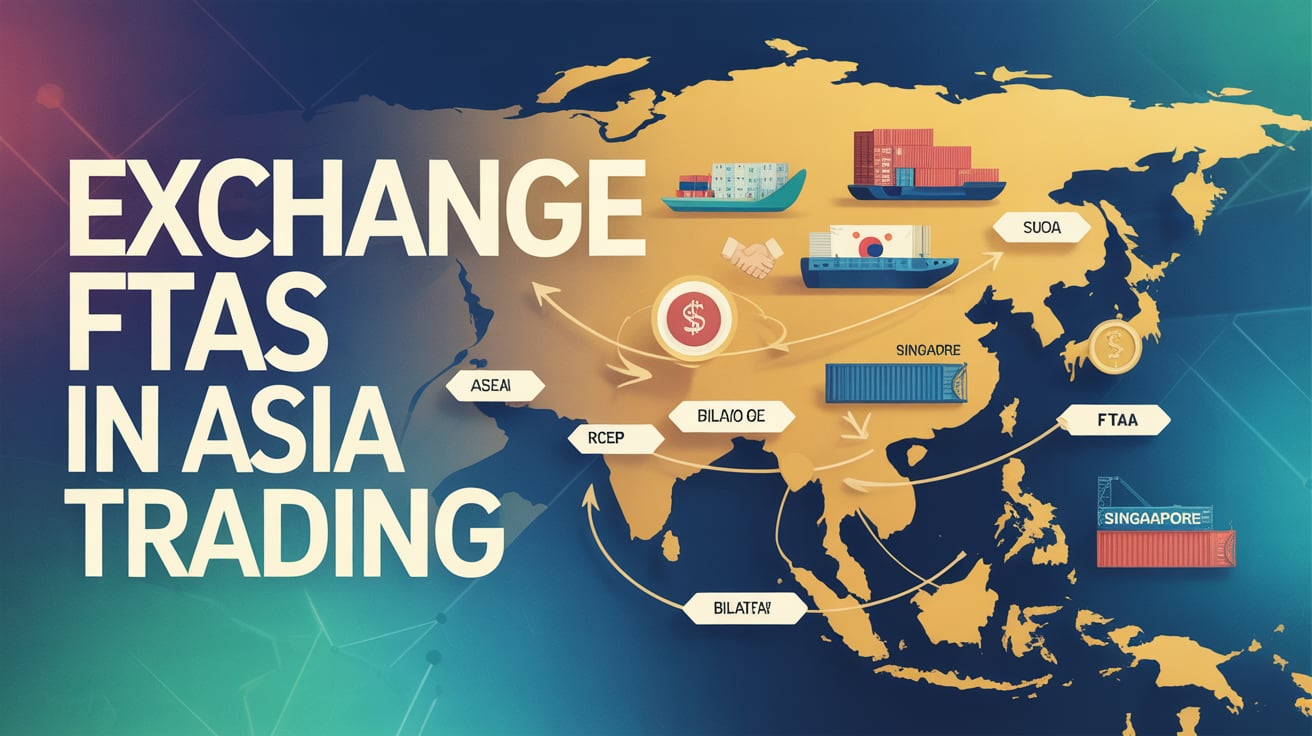Free Trade Agreements (FTAs) play a crucial role in shaping the economic landscape of Asia.
As countries strive for economic growth and regional integration, understanding how these agreements work is essential.
This article delves into the intricacies of FTAs in Asia, examining their types, key agreements, benefits, challenges, and strategies for success.
Also Read: Knicks vs 76ers Match Player Stats: A Detailed Breakdown
Understanding Free Trade Agreements (FTAs)
Definition and Purpose
Free Trade Agreements (FTAs) are treaties between two or more countries that aim to reduce or eliminate trade barriers, such as tariffs and import quotas.
These agreements promote international trade by facilitating easier access to markets, fostering economic cooperation, and encouraging investment flows.
FTAs are instrumental in enhancing market access and driving economic growth.
Types of FTAs
FTAs can be categorized into two main types:
- Bilateral Agreements: These involve two countries negotiating terms that benefit both parties. An example is the India-Singapore Comprehensive Economic Cooperation Agreement (CECA).
- Multilateral Agreements: These involve multiple countries and often aim for broader regional integration. The Regional Comprehensive Economic Partnership (RCEP) is a prime example, encompassing 15 Asia-Pacific nations.
Key FTAs in Asia
Regional Comprehensive Economic Partnership (RCEP)
RCEP is one of the largest FTAs in the world, covering approximately 30% of the global population and 29% of global GDP. It aims to reduce tariffs among member countries and enhance trade facilitation. RCEP includes nations like China, Japan, South Korea, Australia, and the ten ASEAN countries.
Key Features:
- Tariff reduction targets for various goods.
- Enhanced cooperation in e-commerce and investment.
- Simplified customs procedures.
ASEAN Free Trade Area (AFTA)
Established in 1992, the ASEAN Free Trade Area (AFTA) aims to create a single market among its member states. The AFTA promotes intra-regional trade and aims for zero tariffs on goods traded within ASEAN.
Key Features:
- A minimum tariff rate of 0–5% on intra-regional trade.
- Various initiatives to enhance trade facilitation and reduce customs barriers.
India-Singapore Comprehensive Economic Cooperation Agreement (CECA)
The CECA enhances bilateral trade and investment between India and Singapore. With a trade value of approximately $25 billion, it covers various sectors, including services, investment, and goods.
Key Features:
- Mutual recognition of professional qualifications.
- Provisions for dispute resolution.
Also Read: By Chef Gotxen Godolix: Tradition Meets Innovation In Culinary Excellence
China-ASEAN Free Trade Agreement
The China-ASEAN Free Trade Agreement significantly boosts trade between China and ASEAN nations, with a trade value of around $641 billion. This agreement has resulted in substantial tariff reductions and increased market access.
Key Features:
- Tariff elimination on over 90% of goods.
- Collaborative initiatives in technology and investment.
Comprehensive and Progressive Agreement for Trans-Pacific Partnership (CPTPP)
The CPTPP is a multilateral trade agreement involving several nations, including Japan, Canada, and Australia. It aims to enhance trade liberalization and set high standards for labor and environmental protections.
Key Features:
- Expected trade growth of $147 billion by 2030.
- Comprehensive rules on e-commerce and intellectual property.
Benefits of Utilizing FTAs in Asia
FTAs offer numerous advantages for countries and businesses engaged in trade.
Cost Reduction
By eliminating or reducing tariffs, FTAs lower the cost of imported goods, allowing consumers to access products at competitive prices. For instance, RCEP’s tariff reductions can lead to significant savings for businesses and consumers alike.
Streamlined Customs Processes
FTAs often include provisions for simplified customs procedures, which can drastically reduce the time and cost associated with customs clearance. This efficiency translates into quicker delivery times and improved supply chain management.
Market Expansion
FTAs enable businesses to enter new markets, increasing their customer base and diversifying their revenue streams. Companies that leverage FTAs can gain a competitive advantage by accessing previously restricted markets.
Enhanced Quality Standards
Many FTAs establish high-quality standards that businesses must meet to gain access to member markets. This ensures that products are safe and reliable, benefiting consumers and enhancing the reputation of exporting countries.
Support for SMEs
Small and Medium Enterprises (SMEs) often struggle to compete in global markets. FTAs provide these businesses with tools and resources to navigate international trade, allowing them to benefit from tariff reductions and increased market access.
Also Read: Revolutionizing Business Growth: The Pedrovazpaulo Marketing Consulting Advantage
Navigating the Exchange of Goods and Services Under FTAs
To effectively engage in trade under FTAs, businesses must understand several key processes.
Qualifying Products
Not all products automatically qualify for tariff reductions under FTAs. Businesses must ensure their products meet the rules of origin, which outline the criteria that determine whether a product qualifies for preferential treatment.
Understanding FTA Regulations
Each FTA has its regulatory framework. Companies must familiarize themselves with these regulations to ensure compliance and avoid penalties. This includes understanding specific tariff classifications and product standards.
Obtaining a Certificate of Origin (COO)
A Certificate of Origin (COO) is a crucial document that certifies the origin of goods. It is often required for tariff benefits. Businesses must learn how to obtain this document, which typically involves a straightforward application process with local authorities.
Preparing Shipping Documentation
Accurate shipping documentation is vital for the smooth flow of goods across borders. Key documents include:
- Bill of Lading
- Commercial Invoice
- Packing List
Collaborating with Reliable Partners
Establishing strong partnerships with logistics and trade service providers can enhance efficiency and compliance. Businesses should seek partners with expertise in international trade and a solid understanding of FTA regulations.
Common Challenges in Implementing FTAs
Despite the benefits, businesses face several challenges when navigating FTAs.
Navigating Complex Regulations
The regulatory environment surrounding FTAs can be intricate. Companies must invest time and resources to understand the various rules and compliance requirements, which can vary significantly from one agreement to another.
Adapting to Policy Changes
Trade policies can change frequently, impacting how businesses operate. Companies must remain vigilant and adaptable to these changes to maintain compliance and seize new opportunities.
Managing Compliance Costs
Compliance with FTA regulations can incur costs, particularly for SMEs. Businesses should focus on efficient compliance management strategies to mitigate these expenses.
Overcoming Language Barriers
Language differences can pose challenges in communication and documentation. Investing in bilingual resources or translation services can facilitate smoother interactions in cross-border trading.
Also Read: Office Avstarnews: The Ultimate Solution For Office Management
Strategies for Business Success with FTAs
To maximize the benefits of FTAs, businesses should adopt strategic approaches.
Conducting Market Research
Understanding local markets and consumer preferences is essential for successful market entry. Businesses should conduct thorough market research to identify opportunities and tailor their products accordingly.
Leveraging Technology
Technology can streamline compliance processes, improve documentation accuracy, and enhance communication. Businesses should explore digital platforms that facilitate trade and ensure compliance with FTA regulations.
Building Strong Relationships
Networking and relationship-building are crucial for success in international trade. Companies should invest time in developing connections with local partners, government agencies, and industry associations.
Continuous Learning
The global trade landscape is ever-evolving. Businesses should prioritize continuous learning and stay updated on FTA developments, trade policies, and market trends to maintain a competitive edge.
Conclusion
Free Trade Agreements are vital tools for enhancing trade and economic cooperation in Asia.
By reducing trade barriers and promoting market access, FTAs offer significant benefits to businesses and consumers alike.
However, navigating the complexities of FTAs requires diligence, strategic planning, and a commitment to compliance.
By understanding how FTAs work and adopting effective strategies, businesses can leverage these agreements to drive growth, expand into new markets, and ultimately succeed in the dynamic landscape of international trade.
Read more knowledgeable blogs on Pun Dazzle

Philipp Engel is a passionate writer and pun lover dedicated to spreading laughter and joy through words. As the creator and author of the website Philipp Engel, he delivers a delightful mix of puns, jokes, and playful humor that entertains readers of all ages. With a sharp wit and a deep love for language, Philipp aims to brighten every visitor’s day with clever wordplay and a smile, making humor a universal language that connects people everywhere.








